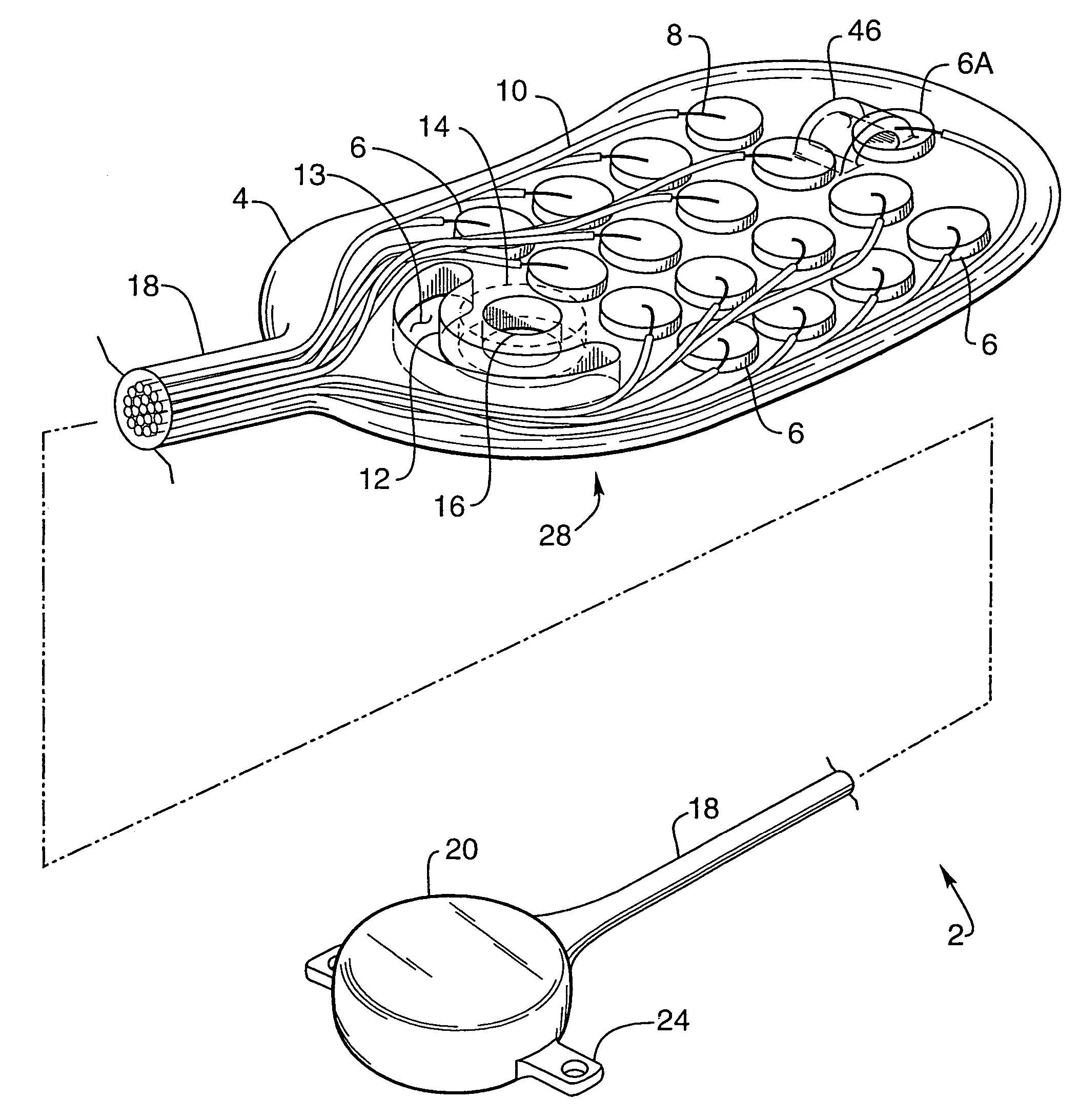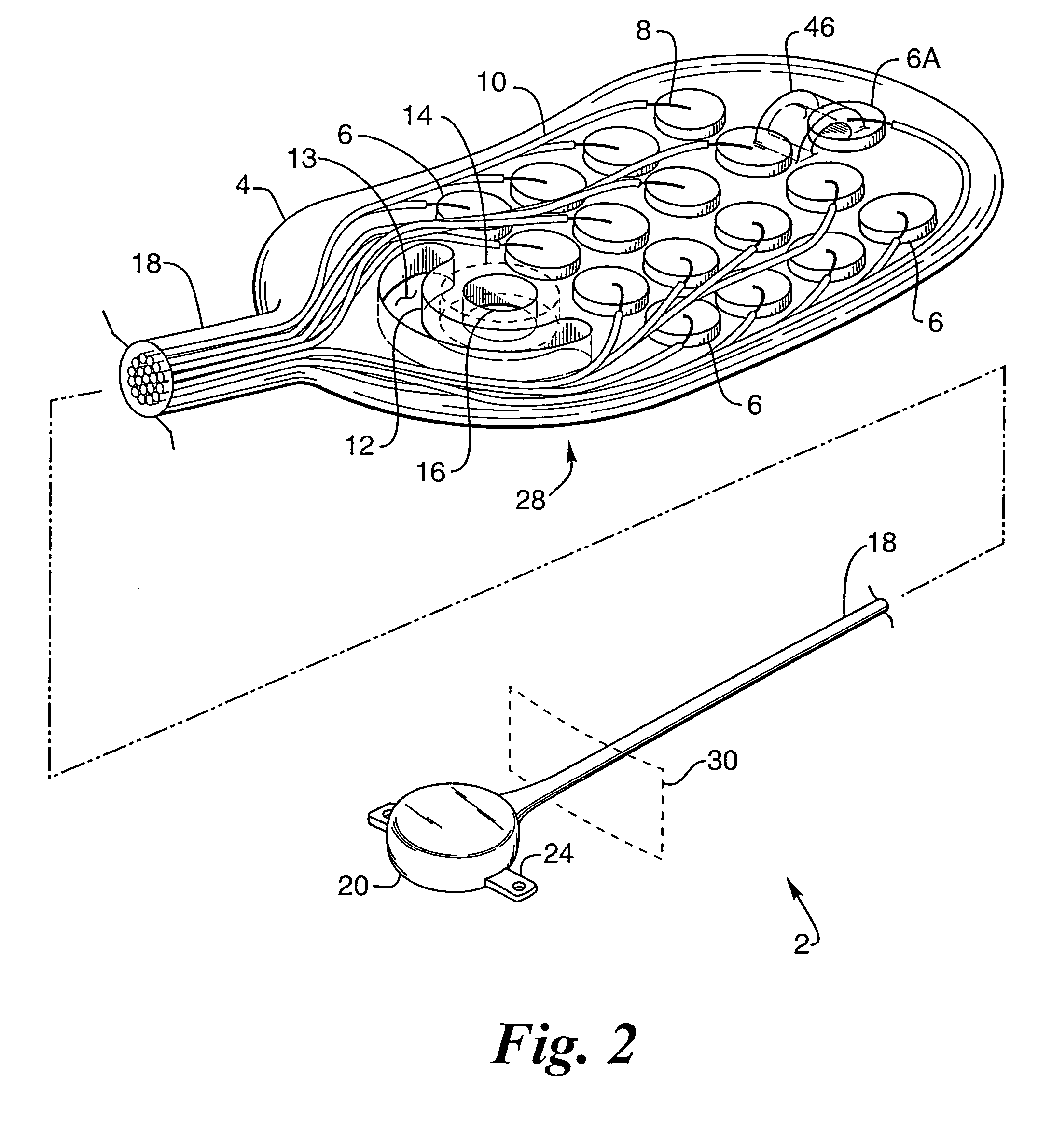Implantable drug delivery device
a drug delivery and implantable technology, applied in the field of controlled time of release and rate of release, can solve the problems of large prosthesis devices, increased possibility of retinal trauma, and inability to produce adequate simulated vision to truly aid the visually impaired,
- Summary
- Abstract
- Description
- Claims
- Application Information
AI Technical Summary
Benefits of technology
Problems solved by technology
Method used
Image
Examples
Embodiment Construction
[0061]The following description is the best mode presently contemplated for carrying out the invention. This description is not to be taken in a limiting sense, but is made merely for describing the general principles of the invention. The scope of the invention should be determined with reference to the claims.
[0062]FIG. 1 provides a perspective view of a preferred embodiment of the retinal electrode array, generally designated 2, comprising oval-shaped electrode array body 4, a plurality of electrodes 6 made of a conductive material, such as platinum or one of its alloys, but that can be made of any conductive biocompatible material such as iridium, iridium oxide or titanium nitride, and single reference electrode 6A made of the same material as electrode 6, wherein the electrodes are individually attached to separate conductors 8 made of a conductive material, such as platinum or one of its alloys, but which could be made of any biocompatible conductive material, that is envelope...
PUM
 Login to View More
Login to View More Abstract
Description
Claims
Application Information
 Login to View More
Login to View More - R&D
- Intellectual Property
- Life Sciences
- Materials
- Tech Scout
- Unparalleled Data Quality
- Higher Quality Content
- 60% Fewer Hallucinations
Browse by: Latest US Patents, China's latest patents, Technical Efficacy Thesaurus, Application Domain, Technology Topic, Popular Technical Reports.
© 2025 PatSnap. All rights reserved.Legal|Privacy policy|Modern Slavery Act Transparency Statement|Sitemap|About US| Contact US: help@patsnap.com



